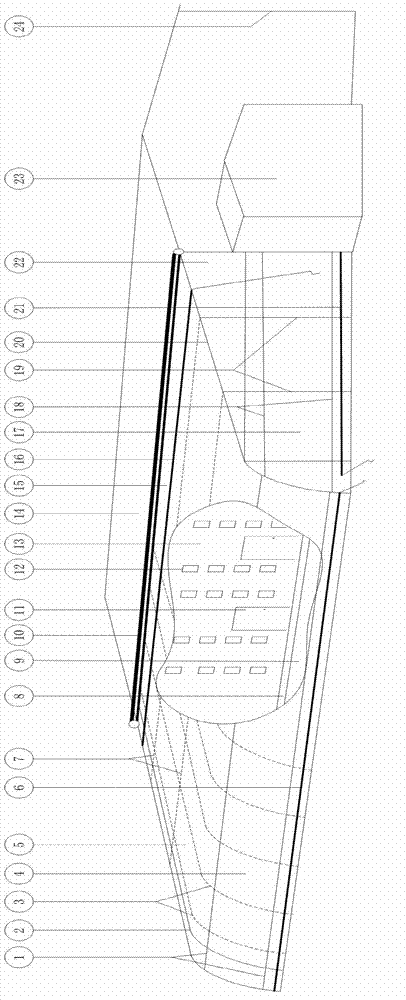Edible mushroom and vegetable co-planting method
A technology of edible fungi and vegetables, applied in the field of co-production of edible fungi and vegetables, can solve the problems of high fuel cost, failure to produce mushrooms, slow production of Agaricus bisporus mycelium, etc., to improve soil fertility, physical and chemical properties, and comprehensive benefits Obvious, increase the effect of vegetable income
- Summary
- Abstract
- Description
- Claims
- Application Information
AI Technical Summary
Problems solved by technology
Method used
Image
Examples
Embodiment Construction
[0024] A co-production method of edible fungi and vegetables, comprising:
[0025] (1) Use the stockpiling site 9 in front of the mushroom house and the south wall 13 of the mushroom house to build a solar greenhouse: bury expansion bolts under the eaves of the south wall 13 of the mushroom house, connect firmly with the galvanized steel pipe 3, and bury the other end of the galvanized pipe 3 Fixed underground; the length of the galvanized pipe 3 depends on the size of the site, and the distance between two pairs is 80-100cm. The double-beam structure without supporting columns or the internal supporting columns are used to fix the galvanized pipe frame; The pressure film rope 2 is fixed, and a solar greenhouse is built. The stockpiling site 9 is located in the greenhouse, and the mushroom house and the greenhouse are connected through the mushroom house door; insect-proof nets 4, 15, 17 are installed around the greenhouse and on the top, and a hand-operated film is installed o...
PUM
 Login to View More
Login to View More Abstract
Description
Claims
Application Information
 Login to View More
Login to View More - R&D
- Intellectual Property
- Life Sciences
- Materials
- Tech Scout
- Unparalleled Data Quality
- Higher Quality Content
- 60% Fewer Hallucinations
Browse by: Latest US Patents, China's latest patents, Technical Efficacy Thesaurus, Application Domain, Technology Topic, Popular Technical Reports.
© 2025 PatSnap. All rights reserved.Legal|Privacy policy|Modern Slavery Act Transparency Statement|Sitemap|About US| Contact US: help@patsnap.com

